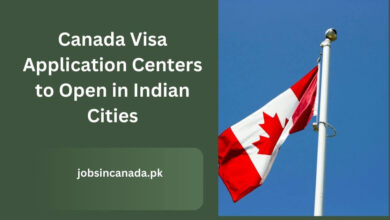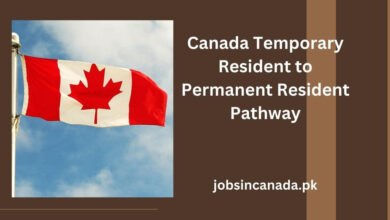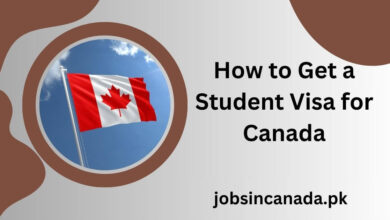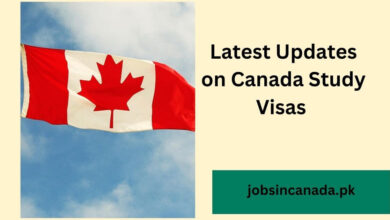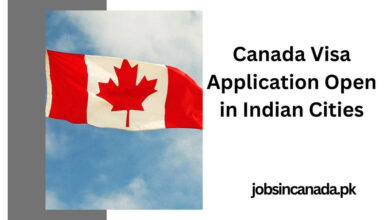Move to Canada in December with Your Family
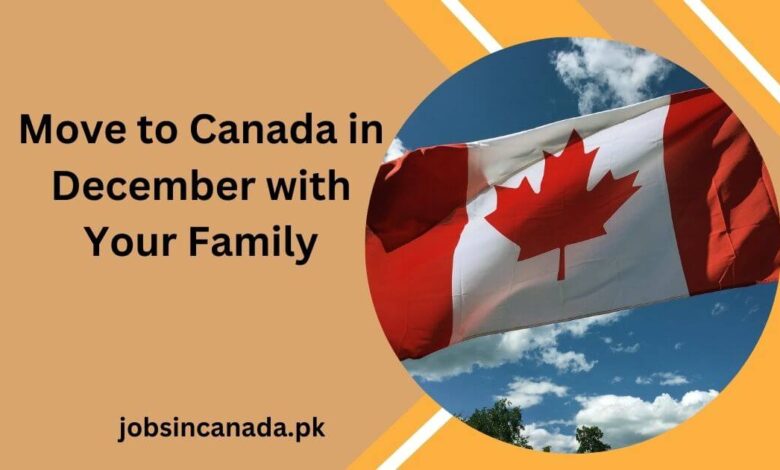
This article will discuss the effective utilization of Canada’s provinces and professions for immigration purposes. The prospect of relocating to Canada is viewed by many as a fantastic opportunity, a chance to realize their aspirations of permanently establishing themselves in the great white North. People are pursuing this goal, which has increased inquiries regarding personalized advice.
There is a significant number of potential immigrants who are unable to navigate the intricacies of Canada’s immigration process, particularly in terms of aligning their talents and qualifications with the appropriate pathway. In this category, we also encounter individuals who have initiated the express entrance process but are currently unsure of how to continue in their pursuit of permanent residency in Canada.
Some individuals continue to be apprehensive about commencing their immigration process due to the apprehension that has been induced by their previous immigration experiences. The process of relocating to Canada is not as challenging as it may seem. A tailored approach to the appropriate province or provinces and a clear understanding of your talents and qualifications can enable you to establish a new existence for yourself and your family in Canada.
This comprehensive guide will introduce you to four Canadian provinces that are in high demand for skilled workers and professionals and offer a plethora of immigration opportunities. Additionally, we will provide our perspective on the potential transformations to Canada’s immigration landscape.
Overarching Shift in Canada’s Immigration Landscape
Before delving into the specifics of each province, it is crucial to comprehend the general transformation in the immigration environment of Canada for 2023. 2023 has brought about significant enhancements to Canada’s immigration system, which previously prioritized an applicant’s general profile without considering their specialized occupations, in contrast to prior years.
In the present day, Canada prioritizes professional profiles that are tailored to the economic needs of each province and the nation as a whole. In other words, the immigration system has begun to prioritize professionals in specific disciplines that are considered essential, rather than adopting a universal approach. This transformation is evident in numerous categories and endeavors.
Category-Based Draws
In Canada, draws are currently conducted according to categories that are intended for specific groups of qualified workers. These emphasize occupations that align with Canada’s current needs. For example, there are competitions for individuals in the healthcare industry, the transportation industry, the agriculture industry, the vocations, and the STEM fields.
This demonstrates Canada’s emphasis on your professional development, as opposed to solely your comprehensive classification system. CRS rating
Provincial Initiatives
Several provinces have unconventional immigration policies that prioritize specific occupations. For instance, the Saskatchewan Healthcare Expression of Interest (EOI) is designed to attract healthcare professionals, the Alberta IT pathway is designed for IT professionals, and the Saskatchewan Tech Talent pathway is designed for tech specialists.
These campaigns underscore the importance of possessing the requisite skills for the province in which you intend to reside.
Canada Tech Talent Strategy
The objective of this initiative is to simplify the immigration procedure for individuals with specific, in-demand skills, thereby facilitating their immigration to Canada.
The most critical lesson to be gleaned from this shift in Canada’s immigration pattern for 2023 is the importance of determining which provinces offer the most opportunities for individuals with specific skills and qualifications. Concentrate your efforts on the provinces that are most closely aligned with your professional expertise, rather than dividing your time and energy among multiple regions.
Canadian Provinces with Abundant Opportunities
Manitoba
Manitoba, one of Canada’s friendliest provinces, is home to the nation’s earliest provincial nomination program. In Manitoba, the occupations that are being targeted are classified into ten distinct categories:
- Business, finance, and administration
- Natural and applied sciences and related Health occupations
- Operations in education, law, and social community
- Government services
- Occupations in Art, Recreation, and Sport
- Sales and Service occupations
- Trades, transport and equipment operators, and related occupations
- Natural resources, Agriculture, and related occupations
- Occupations in manufacturing and utilities
- Rural and Northern and demand occupations
If any of these descriptions align with your professional expertise, Manitoba may be an ideal destination for you. It is crucial to acknowledge that the Provincial Nominee Program (PNP) in Manitoba necessitates a connection to the province. This connection may be established through acquaintances or family members who are permanent residents or citizens of Manitoba.
Additionally, Manitoba’s expedited application processing speeds facilitate the process of obtaining permanent residency.
Check Also: Latest Young Professional Fellowship Canada
Benefits for Move to Canada in December with Your Family
- Tax Year Start: By relocating in December, your family can establish residency for tax purposes, and you may be eligible for specific benefits, such as the Canada Child Benefit (CCB), beginning in January.
- Year-End Planning: Your arrival in December provides you with the opportunity to plan and revise your finances for the upcoming year, including the application of deductions, credits, or tax savings.
- Hiring Cycles: In sectors such as retail, logistics, and healthcare, employers may continue to recruit in December to prepare for the New Year.
- New Year Job Market: By arriving in December, you are positioned to be among the first to apply for job openings that commence in January. Many organizations initiate new recruiting campaigns at the beginning of the year.
- Smooth Transition for Children: The education system in Canada is adaptable, and moving in December enables your children to enroll in classes after the winter break, thereby facilitating the transition. They have the opportunity to establish themselves before the commencement of the academic year in January.
- Winter Activities for Children: Families with children have a plethora of indoor and winter sports activities to participate in, including hockey, ice skating, and skiing. These activities are ideal for socializing and assimilating into Canadian culture.
- Seasonal Housing Demand: The Canadian housing market is typically less active in December than it is during the prime summer months, as seasonal housing demand is lower. This can lead to increased availability of rental properties and homes for purchase, as well as improved deals.
- Winter Wonderland: Although the temperature may be intimidating for some, your family will have the opportunity to participate in traditional winter activities, including skiing, sledding, and holiday celebrations, during Canada’s winter in December.
- Adjusting Gradually: The Canadian winter is renowned for its winter charm, which includes snowy landscapes, light festivals, and Christmas markets. Adjusting Gradually: Your family will have the opportunity to gradually adjust to the Canadian winter by arriving in December. Consequently, by the time spring arrives, you will have adapted to the cold and learned how to properly bundle up.
Newfoundland and Labrador
The provincial nomination scheme for Newfoundland and Labrador is divided into four priority categories that exclude applicants from the labor market assessment.
- Healthcare vocations encompass a variety of professions, including clinical psychologists, licensed practical nurses, nurse practitioners, and physicians.
- Software developers, biomedical engineers, UI/UX developers, and AI developers are among the occupations that fall under the category of information communications technology (ICT).
- Positions such as security specialists, cloud specialists, bioinformaticians, data analysts, and offshore technicians are included in the category of technical specialist occupations.
- Aquaculture occupations encompass assistant managers, facility technicians, captains, and administrators of farming and feeding operations.
If you possess the requisite qualifications and expertise in these sectors, Newfoundland and Labrador provides an appealing pathway to permanent residency. Furthermore, if you have relatives or friends residing in the province, they can sponsor your application, thereby streamlining the immigration procedure.
Saskatchewan
Saskatchewan’s provincial immigration program employs an unconventional approach. In lieu of a targeted occupations list, the Province maintains an inventory of occupations that are not targeted. The Saskatchewan Immigrant Nominee Program (SINP) is applicable to occupations that are not listed.
Saskatchewan also offers courses that are specifically designed for specific professions. Healthcare personnel, for instance, are not required to submit a job offer to submit an Expression of Interest (EOI). Sponsors may be available to assist you in obtaining employment and establishing permanent residency in Saskatchewan if you have relatives there.
British Columbia
The targeted professions are divided into four distinct categories in the province of British Columbia (BC).
- Technological occupations: include web designers, physicists, astronomers, and data scientists.
- Physiotherapists, pharmacists, dentists, and other healthcare professionals comprise this category.
- Targets early childhood educators and assistants: childcare occupations
- Veterinarians, animal health technologists, and veterinary technicians comprise additional priority occupations.
The broad spectrum of occupations that BC’s Tech occupations category emphasizes is particularly noteworthy. It encompasses not only traditional technology positions but also those that are occasionally overlooked as technology vocations, such as astronomers and physicists.
Even though these four provinces offer appealing immigration options, the rapid entrance system remains a critical pathway for potential immigrants. It functions as a central hub that facilitates the connection of consumers to other provincial services. As a result, it is imperative to maintain the accuracy of your Express entry profile.
It is also imperative to remain informed about the evolving immigration landscape in Canada. Immigration procedures, eligibility standards, and programs are frequently subject to change. Keep yourself informed by staying informed about industry news and updates.
Permanent residence in Canada is feasible. You can achieve your objective of permanently relocating to Canada by ensuring that your talents and abilities are aligned with the appropriate province and that you remain informed about the evolving immigration trends in Canada.
For the most recent information on visa-sponsored jobs, prospective paths, benefits, application processes, and other topics, please visit Newsnowgh.com.
Fraquality Asked Question:
-
Can ik relocate to Canada with my family?
You can bring family members with you to Canada, even if they were processed for permanent residence as your dependents. Dit includes: – your spouse or common-law partner – your dependent child – your spouse or common-law partner’s dependent child – a dependent child of a dependent child The family members who can’t come.
-
What is the best age to immigrate to Canada?
There is no specific age-limit requirement for any Canadian immigration program. That said, in most categories of economic immigration, applicants 25-35 receive the maximum points. Dat doesn’t mean older applicants cannot be selected.
-
How long does it take to bring your family to Canada?
Sponsorship applications for conjugal partners can only be submitted through an outside-of-Canada application process. The standard spousal application processing time is 12 months.
